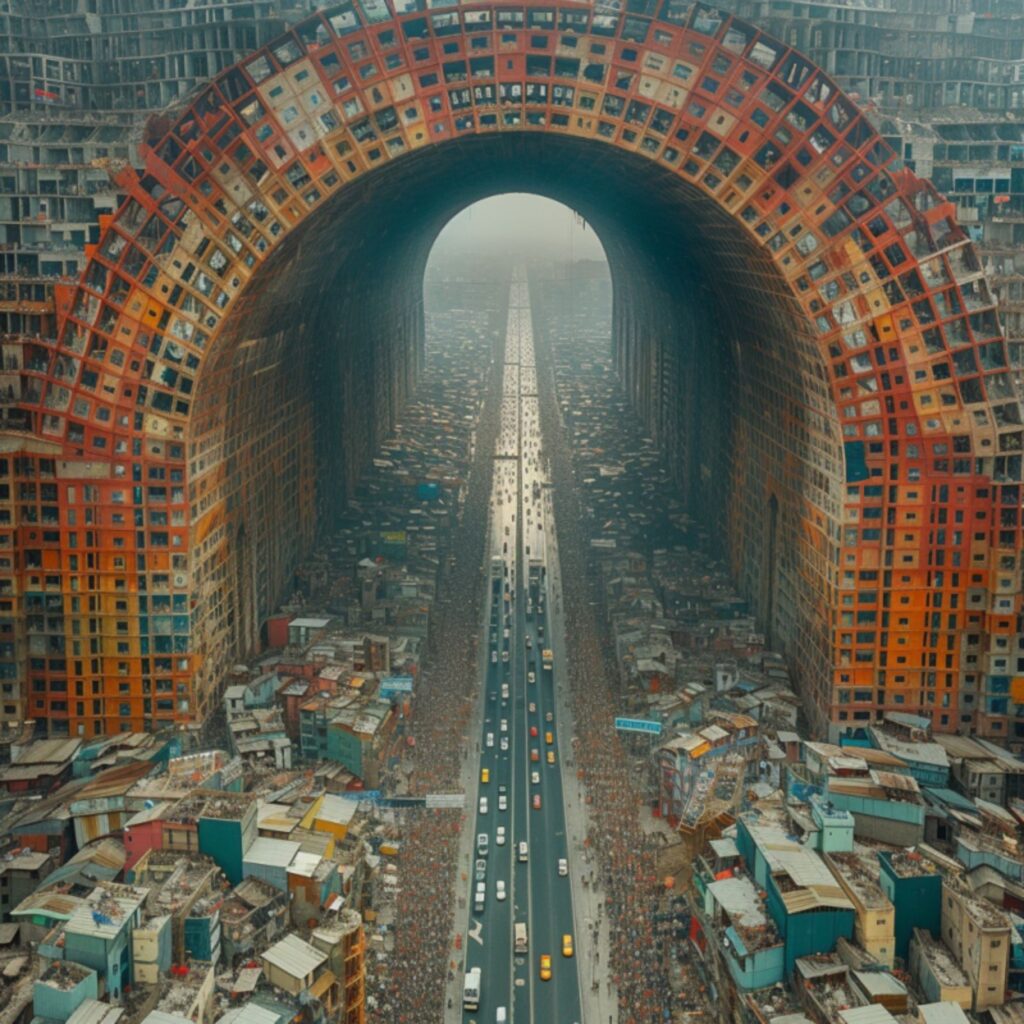AI-DA ART: THE (OTHER) LINE by Andrea Ciofi

AI-DA is closely following this ongoing revolution in the way three-dimensional architectural models are designed and created.
From photographs captured during travels and research projects AI-DA creates series of images related to the representation and perception of architectural space, the urbanized environment.
Through the visual narrative of the evolving relationships between human beings and their environment and between individual and collective space, AI-DA seeks to stimulate reflection on our relationships with the world around us.
THE (OTHER) LINE
THE LINE on the NEOM website was presented like a cognitive city stretching across 170 kilometers. A mirrored architectural masterpiece towering 500 meters above sea level, but a land-saving 200 meters wide that redefines the concept of urban development and what cities of the future will look like.
No roads, cars or emissions, it will run on 100% renewable energy will eventually accommodate 9 million people and will be built on a footprint of just 34 square kilometers will also have access to all daily essentials within a five-minute walk, in addition to high-speed rail – with an end-to-end transit of 20 minutes.
Focusing on the data, we discover that the approximately 300,000 people expected in the 2.4 km to be built by 2023 would be sufficient to entirely accommodate the so-called ultra-high-net worth individuals (UHNWI), i.e. the 243,060 individuals (2022 data) with higher investable assets to 10 million dollars or that 0.005% that controls 5.5% of the world’s wealth.
Referring overall to the overall population envisaged by the initial project (9 million), the construction of 6 The Line could entirely accommodate the 59.4 million people (1.1% of the world population who control 45% of global wealth (for a total of approximately 208 trillion dollars).
Securing citizenship in this city of the future designed by the most exclusive names in international architecture will be a privilege reserved for a few, but even more interesting are the indications that come from observing its design.
All the elements underlying the experiments of the early 20th century to respond to the housing needs of the working class and the efficient and democratic development of the city are overturned in this ideal city of luxury.
The intensive use of land which was supposed to guarantee the maximization of collective and recreational space instead becomes extreme privatization and control of the same, transported within the line, delimited by the 2 skyscraper walls and removed from public function and ownership.
Outside, only the desert remains to guarantee the inaccessibility of this oasis of modernity and happiness to the many who will remain excluded from it.
But then where will those 2.8 billion people (53%) live who have only 1.2% of the world’s wealth?
THE (OTHER) LINE is the counterpart, the reversed image of the first.: A congested and busy infrastructural line, punctuated along its route by elements of concentration and representation of the administrative authority, which acts as the only glue and connection to an infinite city spread without interruption across the territory.
As much as the former is mimetic, sophisticated and aims to hide its true nature behind the technological precision of a mirrored facade, as much as the latter is brazen and cannot help but show itself by replacing the natural landscape.
As much as the former celebrates 100% renewable energy, the absence of machines and polluting emissions, the latter will not be able to give up fossil fuels, traffic and pollution in order to support its development and survive. Source and images Courtesy of Andrea Ciofi.





